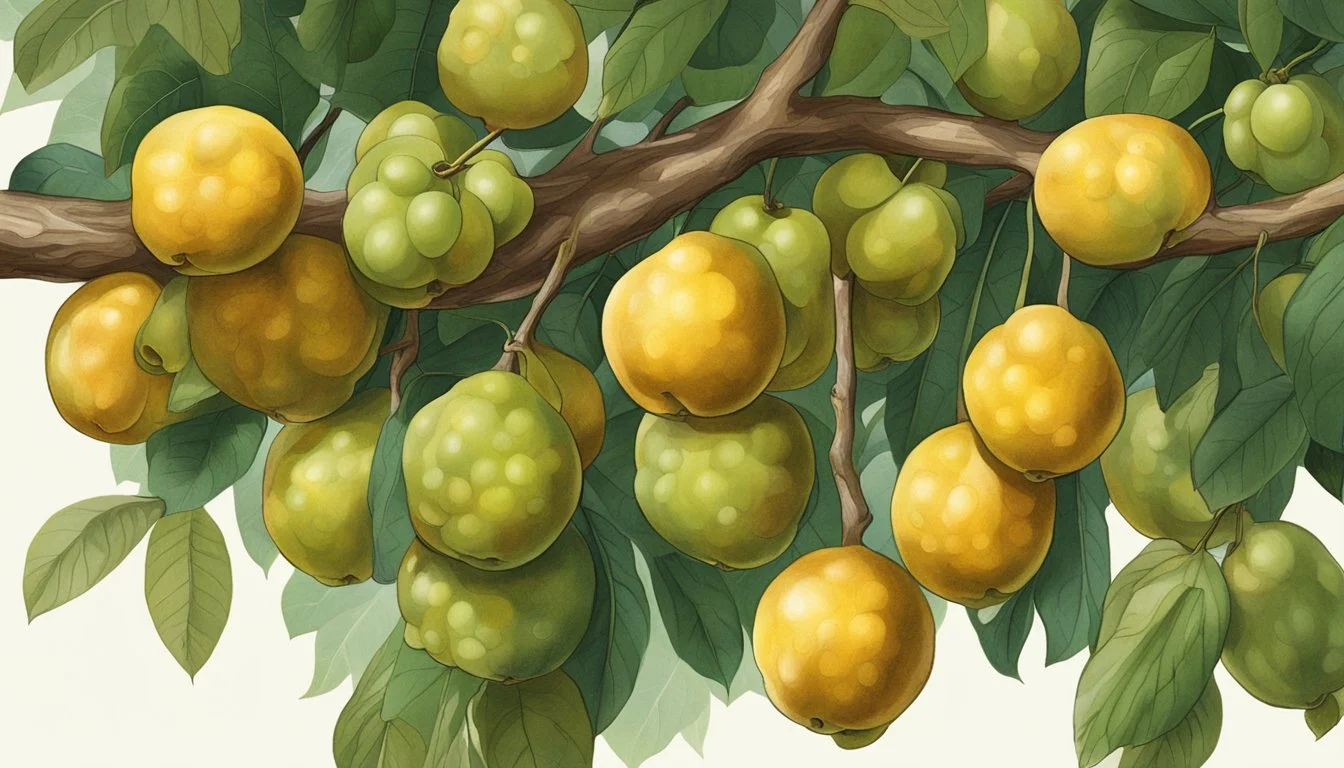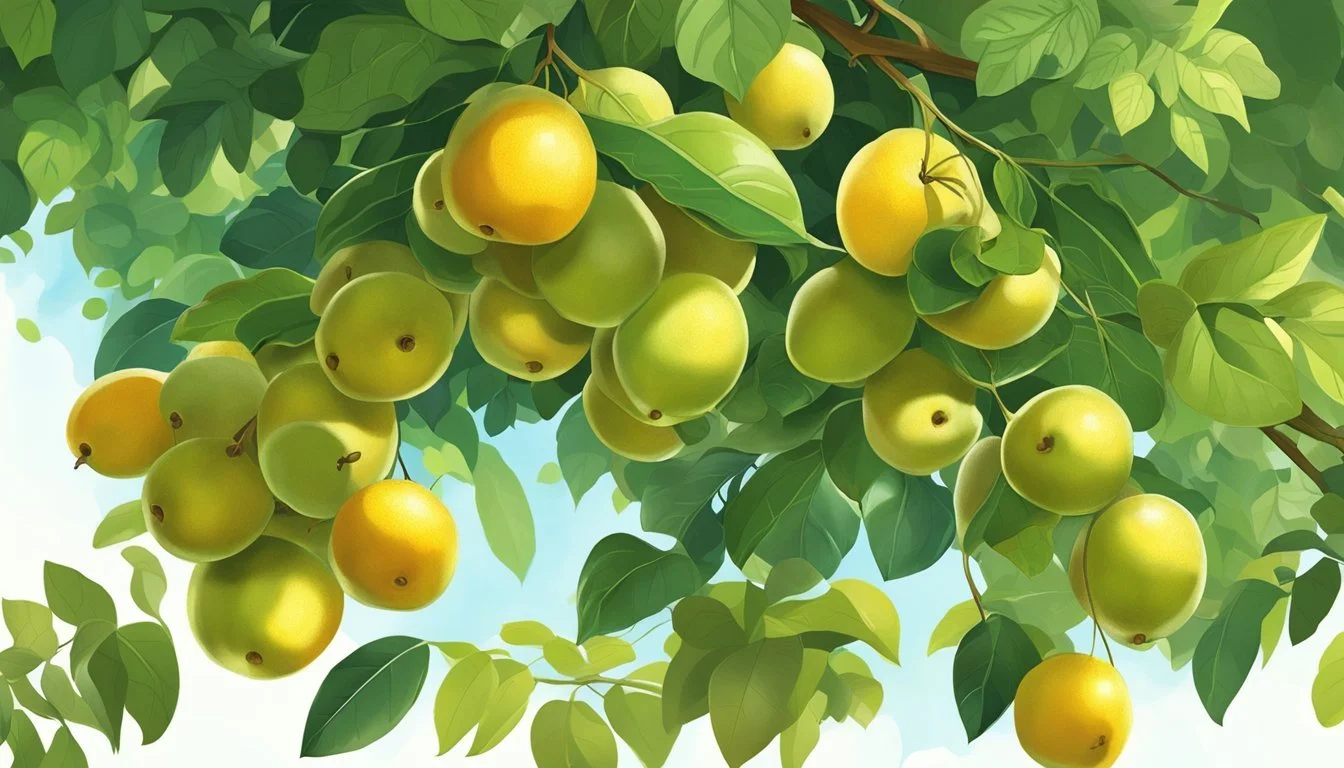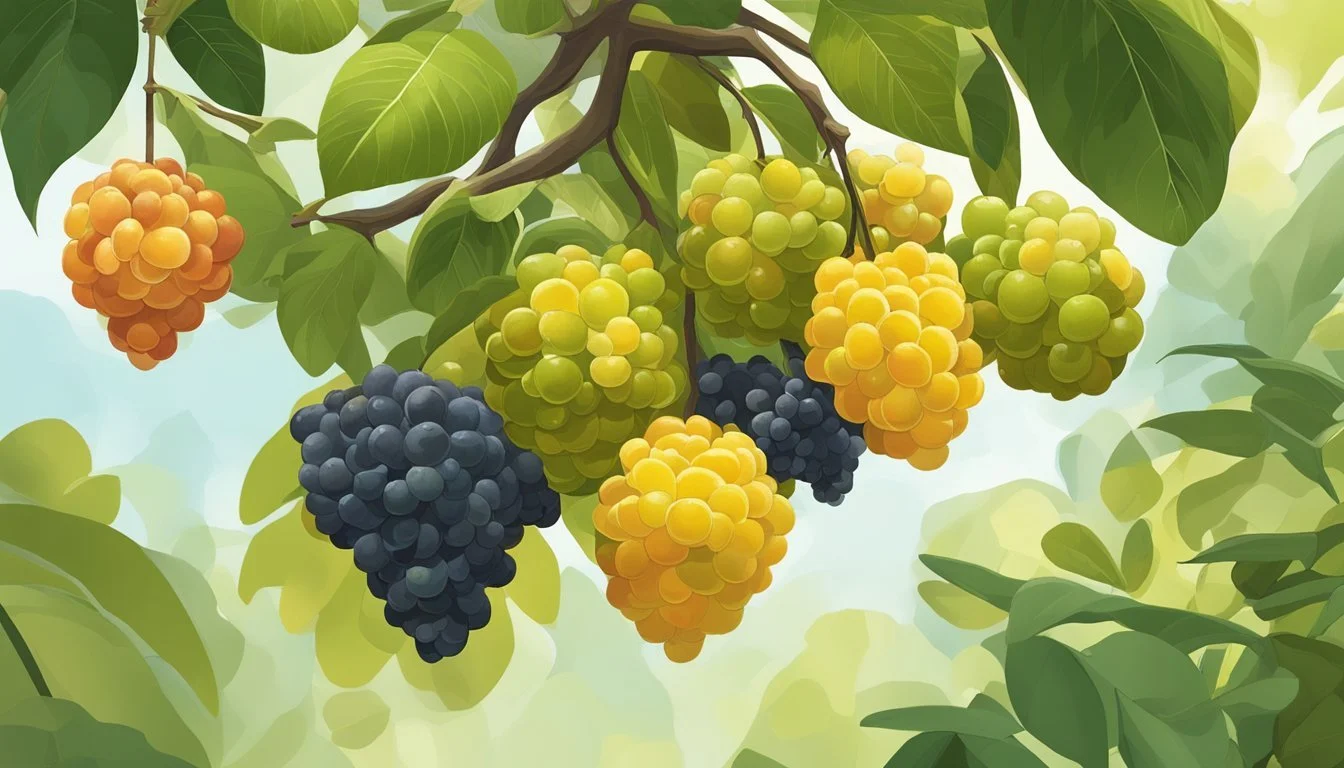How to Tell if a Langsat is Ripe
The Definitive Ripeness Indicators
Langsat, also known as Lansium parasiticum, is a tropical fruit that is treasured for its unique combination of sweet and sour flavors. Knowing when a langsat is ripe is key for enjoying the fruit at its best. Ripe langsats tend to have a subtle give under gentle pressure and possess a sweet aroma. The color is another indicator of ripeness; as they mature, the outer skin of the fruit transitions from green to a yellowish tone. It is important to note that the presence of latex in unripe langsat can make it unpleasantly bitter.
Langsats are best enjoyed when they are fully ripe, as this is when the fruit's flavor and juiciness are at their peak. To determine ripeness, one should look for signs like the absence of latex, which typically diminishes as the fruit matures. A ripe langsat should be free of green spots and have a uniform yellowish to tan coloration. For those looking to consume this exotic fruit, it is essential to understand how to assess its ripeness to ensure a delightful eating experience.
Key Takeaways
Ripe langsats are slightly soft with a sweet fragrance and have a yellowish skin color.
Lack of latex and a uniform color are reliable indicators of a langsat's ripeness.
Consuming ripe langsats offers the best balance of sweetness and tartness.
Understanding Langsat Ripeness
Recognizing the perfect point of ripeness in langsats is essential for optimal flavor and texture. The following cues will assist in identifying when this tropical fruit is ready to be enjoyed.
Visual Cues of Ripeness
A ripe langsat will exhibit a color change from a deep green to a yellow or yellow-brown hue. The skin should be free of blemishes and possess a uniform color indicative of ripeness. Unripe papayas, for comparison, maintain a green color, while a ripe papaya will often turn yellow or orange.
Tactile Assessments
The texture of a ripe langsat can be determined through gentle pressure. The skin should yield slightly to touch, indicating softness, but should not feel mushy. A ripe papaya, when compared, also becomes soft under gentle pressure, which is a reliable indicator of its ripeness.
Aromatic Indicators
A ripe langsat releases a sweet aroma that is distinct and appealing. This aroma is a clear sign of ripeness. Likewise, ripe papayas are known for their sweet smell, which becomes more pronounced as the fruit reaches full ripeness.
Checking the Flesh
Upon cutting into a ripe langsat, the flesh color should be translucent and juicy. The texture should be tender, and the flavor will be sweet with a hint of tartness. In ripe papayas, the flesh becomes a vibrant orange with a sweet taste and a smooth texture.
Factors Influencing Langsat Ripeness
When determining the ripeness of a langsat, one must consider various elements such as environmental conditions, soil, and handling practices which play pivotal roles in the fruit's maturation.
Climatic Influence
Climate is critical for langsat, a tropical fruit native to Southeast Asia. Optimal ripening occurs in warm regions with high humidity. The langsat thrives on consistent sunlight which is abundant in tropical areas like Thailand.
Soil and Cultivation Conditions
The type of soil and the quality of cultivation conditions influence langsat ripening. They perform best in deep, well-drained soils. Proper planting practices that control nutrient levels support the healthy development of fruit.
Harvesting and Age
The age of a langsat tree and the timing of harvesting are indicators of ripeness. Typically, a tree bearing fruit for the first time might not yield fully matured langsats. Ripeness is ideally judged by the color and feel of the fruit.
Ethylene Gas and Ripening
Ethylene gas is a natural hormone that supports the ripening process. Exposing langsat to ethylene, often released by fruits (What wine goes well with fruits?) like bananas, avocados, and mangos, can accelerate ripening.
Other Fruits' Ripening Effects
The proximity to other ripening fruits, such as durians, may affect a langsat's maturation. These fruits can emit ethylene gas which can in turn prompt the langsat fruit to ripen.
Ripeness and Consumption
When it comes to langsat, a tropical fruit predominantly found in Southeast Asia, especially Thailand, its ripeness is crucial for the optimal taste and health benefits it offers. Recognizing the perfect ripeness ensures maximum enjoyment and utility of this nutrient-rich fruit.
Optimal Consumption Time
The ideal time to consume langsat is when the fruit's skin turns from green to a yellowish color, indicating it is ripe. A ripe langsat should feel slightly soft to the touch, and its interior segments should be translucent and juicy. A bitter-tasting latex can be present in unripe langsats, so one should wait until the fruit is fully ripe to enjoy the best flavor.
Health Benefits of Ripe Langsat
Ripe langsats are a treasure trove of nutrients and antioxidants. They provide a considerable amount of dietary fiber, vitamins, such as vitamin C, and minerals like potassium. These compounds are essential for maintaining good health, and the antioxidants found in langsat can help neutralize harmful free radicals in the body.
Culinary Uses
Langsat can be enjoyed raw or used in various culinary applications. When ripe, its sweet and tangy flavor profiles can enhance fruit salads, desserts, and sauces. The pulp can also be incorporated into jams and jellies. It's important to handle the fruit gently during preparation, as the segments are tender when ripe and can easily be damaged.
Storage Techniques for Langsat
When it comes to storing langsat, one must consider both the duration of storage and the desired ripeness level of the fruit. Proper storage techniques can extend the shelf life of langsat and preserve its quality.
Short-Term Storage Solutions
For short-term storage, it is best to keep langsat at room temperature away from direct sunlight. They should be stored in a cool, dry place if they are to be consumed within a week. Storing the fruits in a mesh or perforated plastic bag can help maintain proper ventilation. Additionally, to prevent moisture accumulation that can lead to spoilage, it's advisable not to wash the fruits before short-term storage.
Long-Term Preservation
Long-term storage demands a colder environment, such as a refrigerator. It is essential to store langsat within a crisper drawer at temperatures between 2°C to 7°C (35°F to 45°F). This cold storage can significantly slow down the ripening process and extend the fruit's freshness for several weeks. Ensure that the storage area is free of ethylene gas-producing fruits as ethylene can accelerate ripening.
Ripening Unripe Langsats
Unripe langsats can be ripened using a brown paper bag method, which traps the ethylene gas emitted by the fruit, thereby hastening the ripening process. One can store multiple fruits together in a single bag to increase the concentration of ethylene gas. Checking the fruits daily and removing any damaged ones can help achieve uniform ripeness. Once ripe, they should then be transferred to cold storage to maintain their sweetness and firmness.
Troubleshooting Ripeness Issues
When it comes to determining the ripeness of a langsat, there are distinct signs to look for. Facing issues with overripe or under-ripe fruits can be a common challenge. Understanding the internal characteristics of ripeness can help prevent these issues.
Dealing with Overripe Langsats
Overripe langsats can have a mushy texture and an overly sweet, sometimes fermented taste. To identify overripe fruit, one should check for:
Softness: If the skin gives too easily under gentle pressure, it may be overripe.
Flesh color: A brownish tint to the flesh indicates the fruit is past its prime.
Preventive Measures: Keep langsats at a cool temperature to slow down their ripening process once they reach desired ripeness.
Identifying and Preventing Under-ripeness
A langsat is unripe if:
It exhibits a hard surface with no give when pressed.
The fruit's flesh is overly firm and lacks juiciness.
Preventive Measures: To ripen langsats:
Place them at room temperature, away from direct sunlight.
Check daily for the development of a slight give to the fruit's surface, indicating the onset of ripeness.
Internal Characteristics of Ripeness
A ripe langsat should show:
Flesh Color: Pale yellow to translucent flesh indicates a ripe langsat.
Seeds: Ripe langsats tend to have a tender seed that is surrounded by moist, sweet flesh.
Inspecting these internal features involves sampling a fruit from the batch, as external indicators may not always be reliable.
Langsat Varieties and Ripeness
Langsat (Lansium domesticum) comes in several varieties, each with indicators for determining ripeness. The main cultivars include the duku and dookoo, which are generally thicker skinned, and the var. pubescens that has a thinner skin and a more hairy appearance.
Duku and dookoo exhibit a yellowish to brownish skin when ripe. They typically have less latex and are sweeter than other varieties. To identify a ripe duku, one should look for a slight give when the fruit is gently pressed.
The pubescens variety is known for its thinner, yellow skin, which is normally covered in fine hair. This cultivar ripens when the color deepens to a golden yellow, and the hairs may also appear less pronounced.
Ripeness Indicators
Variety: Duku
Skin Color (Ripe): Yellow to Brownish
Skin Texture: Thick
Sweetness Level: High
Variety: Dookoo
Skin Color (Ripe): Yellow to Brownish
Skin Texture: Thick
Sweetness Level: High
Variety: Pubescens
Skin Color (Ripe): Golden Yellow
Skin Texture: Thin, Hairy
Sweetness Level: Moderate to High
In all langsat varieties, the fruit should feel heavy for its size, indicating juicy flesh inside. Another ripeness clue is the smell; ripe langsats emit a subtle, sweet fragrance. While appearance is a primary cue, gently squeezing the langsat to feel for a slight yield can also determine readiness for consumption.
Buyers should bear in mind that langsat fruits do not ripen significantly after harvest, so selecting fruits that display these ripe characteristics at the point of purchase is crucial.
Frequently Asked Questions About Langsat Ripeness
When selecting langsat fruit, here are some common queries addressed for optimal ripeness:
How can one tell if a langsat is ripe?
A ripe langsat will have a yellow to pale brown skin. The fruit should feel slightly soft to the touch, but not mushy.
What does the skin of a ripe langsat look like?
The skin of a ripe langsat is more yellowish than green and may exhibit some brown spots. It is important not to equate brown spots with spoilage, as they often indicate peak ripeness.
Is there a specific aroma that indicates langsat ripeness?
A ripe langsat emits a subtle, sweet fragrance. If the smell is overly strong or sour, the fruit may be overripe.
Can the weight of a langsat indicate its ripeness?
A ripe langsat tends to feel heavier for its size, suggesting an abundance of juice within.
Should the langsat give to pressure when ripe?
Yes, applying gentle pressure to a langsat should result in a slight yield. This indicates that the flesh inside is juicy and plump.
Appearance of langsat seeds in ripe fruits
The seeds of a ripe langsat are often larger and possess a bitter taste, which contrasts with the sweet flesh.
Fruits are generally picked before they are fully ripe to allow for transport without damage. They will continue to ripen off the tree, so it’s beneficial to be familiar with these aspects of ripeness to enjoy langsat at its best.





